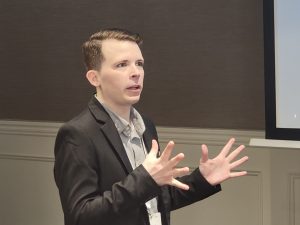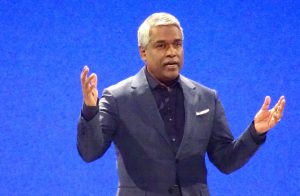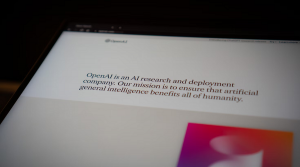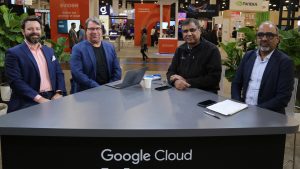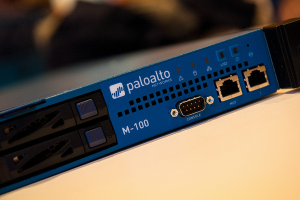NetApp Strikes Again : Massive Overhaul with ONTAP 8.2 Launch : Win for SDS
![]() While Wall Street’s been less than enthusiastic about NetApp’s most recent earnings report, the company takes another step towards realizing its vision of software-defined storage. NetApp just pulled the curtains back on Clustered Data ONTAP 8.2, the latest version of its flagship storage operating system. The new release introduces a number of powerful capabilities designed to cut through traditional storage limitations and help IT departments “nondisruptively align the storage infrastructure with changing business and application demands.” The update is one NetApp customers have anticipated for some time, according to a recent Wikibon survey cited in this Forbes piece, and could help the storage firm regain the faith of doubting investors and clients alike.
While Wall Street’s been less than enthusiastic about NetApp’s most recent earnings report, the company takes another step towards realizing its vision of software-defined storage. NetApp just pulled the curtains back on Clustered Data ONTAP 8.2, the latest version of its flagship storage operating system. The new release introduces a number of powerful capabilities designed to cut through traditional storage limitations and help IT departments “nondisruptively align the storage infrastructure with changing business and application demands.” The update is one NetApp customers have anticipated for some time, according to a recent Wikibon survey cited in this Forbes piece, and could help the storage firm regain the faith of doubting investors and clients alike.
Clustered Data ONTAP can scale up to 69PB of storage and 24 controller nodes, 49,000 LUNs and 12,000 NAS volumes with 100,000 clients. The system can support up to 20 petabytes per container, and it comes in single-node and switchless configurations. Another major feature is ONTAP’s ability to deliver continuous data access during scheduled downtime (controller upgrades, dynamic load balancing, et al.) without manual migrations. Additional features of v8.2 include support for the SMB 3.0, pNFS v4.1, iSCSI, FCoE, and Fibre Channel protocols, resource pooling in heterogeneous environments, and enhanced integration with vStorage and Hyper-V.
Betting big on clustering
NetApp is going all-in on clustering, a gamble that Wikibon co-founder and chief analyst Dave Vellante says can pay off big time given the rapid adoption of software-led architectures in the enterprise.
![]() NetApp, among its growing bolster of rivals, is ramping up smarter solutions to meet the demands of today’s CIOs. An undeniable influence on the data center of the future is data, how it’s stored and how analytics can be strategically placed to glean the most value from that stored data. The result of this data-driven architecting means NetApp must rethink the data center for data needs, enhancing each component with software to achieve better efficiency.
NetApp, among its growing bolster of rivals, is ramping up smarter solutions to meet the demands of today’s CIOs. An undeniable influence on the data center of the future is data, how it’s stored and how analytics can be strategically placed to glean the most value from that stored data. The result of this data-driven architecting means NetApp must rethink the data center for data needs, enhancing each component with software to achieve better efficiency.
“CIOs are moving from builders of applications and operators of data centers to brokers of information services to the business,” said Jay Kidd, senior vice president and chief technology officer, NetApp. “This new role requires technologies that can speed IT response time and drive operational and resource efficiency. Clustered Data ONTAP fills this need today, providing the key building block that delivers the benefits of software-defined storage models and will replace existing slow and inefficient siloed approaches. Our new software gives IT unsurpassed agility, including the flexibility to deploy across multiple platforms.”
Flexibility to move data out of the silos
Eric Eisman, a senior systems architect at Advanced Systems Group, explained one of the main drivers behind this trend and clustering in particular during an exclusive interview with SiliconAngle’s Mark “Rizzn” Hopkins:
“This allows you a lot of flexibility in doing things like maintenance, doing things like upgrades. You don’t have to take outages anymore. You can move one piece at a time, so it opens up flexibility, it opens up the ability to change your mind.”
Datalink principle Architect Jason Anderson provided his own take on Clustered Data ONTAP in a follow-up chat:
“One of the things it brings to the table is the ability to take a scale-out architecture and match it to the general purpose IT use case as opposed to it being siloed in specific verticals,” he told Hopkins. “Scale-out architectures aren’t new, they have been around for a while, but in many cases they have been restricted to either specific areas of high-performance computing, or geoseismic, where there was a big concentration of compute to go with the storage.”
To hear Eric Eisman’s full take on clustering, NetApp’s advantage and other storage issues, check out the video below. More on NetApp’s strategy for gaining market share in the SDS market after the clip:
A software-led vision
Software-led infrastructure is a key component of NetApp’s long term innovation roadmap, and so is flash: earlier this year, the company revealed that it’s working on an all-flash array for software-driven applications that will combine the best of both worlds (or, at least, that’s the plan).
This is one way NetApp’s looking to leverage its years of R&D to survive the rapid evolution currently taking place in IT. About seven years into ONTAP research, NetApp’s ready to place its bets on its homegrown storage solution. It’s not entirely different from the strategies laid out by Hewlett-Packard and Dell, both confident in their own architecture to transition into the software-led era. These traditional players have the maturity of tried and true infrastructures, but market disrupters like Fusion-io have forced everyone, from vendors to CIOs, to rethink the way storage is organized within the data center, how it communicates with other components in the data center, and how it can be infused with the intelligence to automate processes.
- Where does NetApp fit in?
But the market still holds plenty of promise, for NetApp and its competitors alike. While Wall Street worries over NetApp’s positioning for the future, Vellante points out that there’s no clear winner yet for the era of Big Data and cloud computing.
![]() “I can’t help but wonder who is “well positioned” for big data and cloud computing—Cloudera? Hortonworks? Amazon? Google?” Vellante writes in a recent OpEd on NetApp’s Wall Street woes. “One has to begin to realize –you can hardly play storage as a sector today. If you like storage where do you place your bets? EMC – that’s a bet on VMware. The market is devoid of pure plays. Go to Google finance and type in NTAP or EMC. Who comes up as competitors? Hill, XRTX, HPQ, BRCD, QTM, OVRL, OCZ, ORCL, FIO…
“I can’t help but wonder who is “well positioned” for big data and cloud computing—Cloudera? Hortonworks? Amazon? Google?” Vellante writes in a recent OpEd on NetApp’s Wall Street woes. “One has to begin to realize –you can hardly play storage as a sector today. If you like storage where do you place your bets? EMC – that’s a bet on VMware. The market is devoid of pure plays. Go to Google finance and type in NTAP or EMC. Who comes up as competitors? Hill, XRTX, HPQ, BRCD, QTM, OVRL, OCZ, ORCL, FIO…
“Here’s the bottom line: NetApp is the last pure play ‘storage company’ standing. Storage as we’ve known it for the past twenty years is over.”
Next steps for NetApp in SDS market
For NetApp that means it needs to focus on making the best storage product possible, and retain customers through its core competencies. ONTAP in particular will need to perform well with automation, a critical piece of NetApp’s ability to scale its software-defined solution. The trouble with scripts is that they don’t scale, so when something goes wrong you need the system to “automatically” heal itself. OnCommand is a key contributor to automation, acting as NetApp’s control plane and enabling the potential of clustered ONTAP to be realized (learn more about OnCommand in this report).
And as NetApp studiously builds a software-led solution for the emerging era of “software-defined everything”, time is not on NetApp’s side. To truly remain a leader in this space NetApp must craft a well-defined Storage-as-a-Platform strategy, Vellante recommends, and sooner rather than later. The competition is bubbling up around flash-first storage arrays, and NetApp needs to get its best solutions out on the market to curb the fast-moving and highly disruptive takeover the storage space has seen in recent years.
Contributors: Maria Deutscher
A message from John Furrier, co-founder of SiliconANGLE:
Your vote of support is important to us and it helps us keep the content FREE.
One click below supports our mission to provide free, deep, and relevant content.
Join our community on YouTube
Join the community that includes more than 15,000 #CubeAlumni experts, including Amazon.com CEO Andy Jassy, Dell Technologies founder and CEO Michael Dell, Intel CEO Pat Gelsinger, and many more luminaries and experts.
THANK YOU









